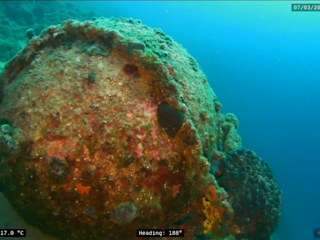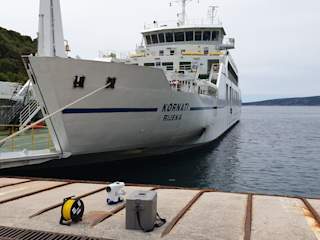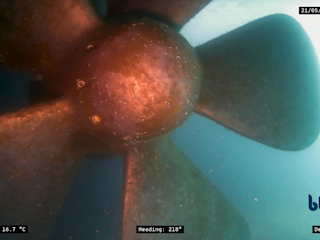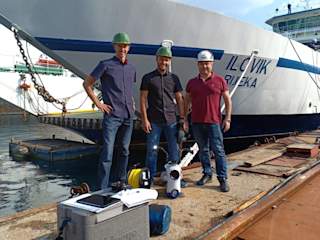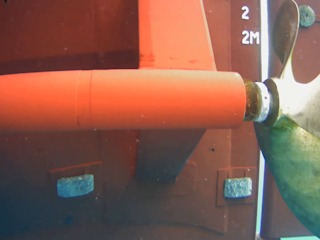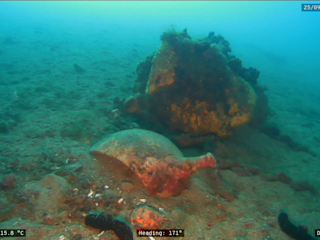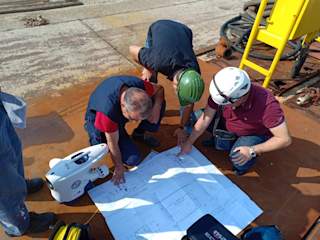
Before 2019, only divers could do underwater tasks at the Faculty of Maritime Studies in Rijeka in Croatia. But when they got the Blueye ROV, things changed. In the beginning, only scientists and professors used the ROV. Later, more people from the university and other offices (port authorities, harbour master's office) started using it as they learned more about its capabilities. Now, Blueye ROV is part of all their main activities, like research, education, training, and working with business partners.
The main advantage of having Pioneer is eyes under the sea for everyone.
- Lovro Maglic, Head of Center for Marine Technologies, Faculty of Maritime Studies in Rijeka

The University of Rijeka is using the ROV to understand and monitor the natural and artificial reefs in the Adriatic Sea. The study is to promote the economic development of the reefs with activities like mariculture and diving tourism.
Blueye Pioneer presented an example of an excellent low-impact technology for underwater habitat monitoring.
- Lovro Maglic, Head of Center for Marine Technologies, Faculty of Maritime Studies in Rijeka
Using the Blueye ROV for various international research projects
The Pioneer ROV is used in scientific projects from the University level to the international level, where the results are presented through reports, deliverables and scientific papers. For the project InterReg ADRIREEF (Innovative Exploitation of Adriatic Reefs to Strengthen Blue Economy), Blueye ROV was used to assess and monitor the pollution around selected artificial and natural reefs and to assess their health and biodiversity.


The capturing of video materials for later analysis was fast and safe, which was crucial for depths over 40 m i.e. beyond recreational divers limits.
- Lovro Maglic, Head of Center for Marine Technologies, Faculty of Maritime Studies in Rijeka
In their ERASMUS project MASK, using Blueye Pioneer, they teach high school students and teachers about Marine Robotics and Artificial Intelligence. They focus on monitoring and protecting underwater environments, specifically looking for and removing pollution like face masks caused by COVID from the seabed.
Using the Blueye ROV for educational purposes
The University of Rijeka uses ROVs in undergraduate and graduate programs across various subjects in education. In the undergraduate program, students use Pioneer ROV for mandatory navigational practice on a national scholarship. Activities include the in-water ship's hull survey, emphasizing the importance of hull maintenance.

Blueye ROV is used in our “hands-on” activities, where students build their piloting skills and how to capture useful video materials for AI analysis.
- Lovro Maglic, Head of Center for Marine Technologies, Faculty of Maritime Studies in Rijeka
In the graduate program, students delve deeper into ROV technology, learning its components, best practices, and applications. Classes include demonstrations and explanations of equipment. Additionally, students utilize the Blueye Pioneer for research in their Master's theses. Several successful theses have been conducted, covering diverse topics such as seabed pollution research, in-water inspection methods, and ROV competency analysis.

In-house ROV pilot training program
The Faculty of Maritime Studies in Rijeka, in collaboration with the Faculty of Electrical Engineering and Computing at University of Zagreb, created a training course called "Inspection class ROV pilot." This course is part of their lifelong learning program, designed for anyone interested in learning more about ROVs and developing piloting skills for various purposes and environments. The training sessions take place at their Center for Marine Technologies (CMT), an educational and research center of the Faculty of Maritime Studies, University of Rijeka. They conduct these programs in an in-water training area at CMT and organize practical sessions in the port of Rijeka and on local shipwrecks and reefs.


The business partners of Faculty of Maritime Studies in Rijeka frequently use ROV services to inspect ships, survey the seabed in ports, and check piers. In January 2023, the Faculty of Maritime Studies got approval from Bureau Veritas to use ROVs for In-Water Surveys on non-propelled and offshore units.
Interesting discoveries with the Blueye Pioneer
Lovro also mentioned that The Blueye Pioneer led to some interesting discoveries, creating new challenges and research opportunities. Notably, they found two unexploded naval mines from WWII and some smaller grenades, all reported and removed.

They collaborated with local associations to document the remains of broken amphorae, pointing out a possible location for further archaeological research that would include seabed excavation. Two sunken sailing boats were also discovered, raising questions about causes, legal status, and pollution.

Joint research programs with other departments and universities
Lovro also mentioned that apart from their ongoing projects, the University of Rijeka collaborated with the Laboratory for Underwater Systems and Technologies (LABUST) from the Faculty of Electrical Engineering and Computing at the University of Zagreb to develop and organize the first-ever Inspection Class ROV training in Croatia using the Blueye ROV.

Furthermore, the university works with the Faculty of Civil Engineering, University of Rijeka, to research different geological structures along the Liburnian coast and islands in the northern Adriatic.
The Pioneer is used to document underwater geological features like rock collapse structures, tidal notches, and natural walls.
- Lovro Maglic, Head of Center for Marine Technologies, Faculty of Maritime Studies in Rijeka
Upcoming projects
Before ending the conversation, Lovro also mentioned their two upcoming projects. The first is studying how nautical tourism vessels affect seabed pollution in Primorje – Gorski Kotar County. The Blueye ROV will be used to search large areas of the seabed using different patterns to find and analyze spots where there's a lot of marine litter on the seabed caused by nautical tourism vessels in specific remote places in the northern Adriatic.
The second project is 3D WRECK, where Blueye ROV will be used to take pictures of the wreck to create 3D models of selected shipwrecks using photogrammetry. The objective is to assess the state, risk to navigation, and pollution of these wrecks, enhancing navigation safety and safeguarding the marine environment.
One important danger should be pointed on the transport box, maybe like this: “Highly addictive – can cause long stay at sea, great time and excitement!” Thanks to the Blueye Team for a great small ROV!
- Lovro Maglic, Head of Center for Marine Technologies, Faculty of Maritime Studies in Rijeka
Ending with such a positive comment is always motivating for the Blueye team. It's amazing to see how our first model, the Blueye Pioneer, is being used for various research projects at the Faculty of Maritime Studies in Rijeka.

